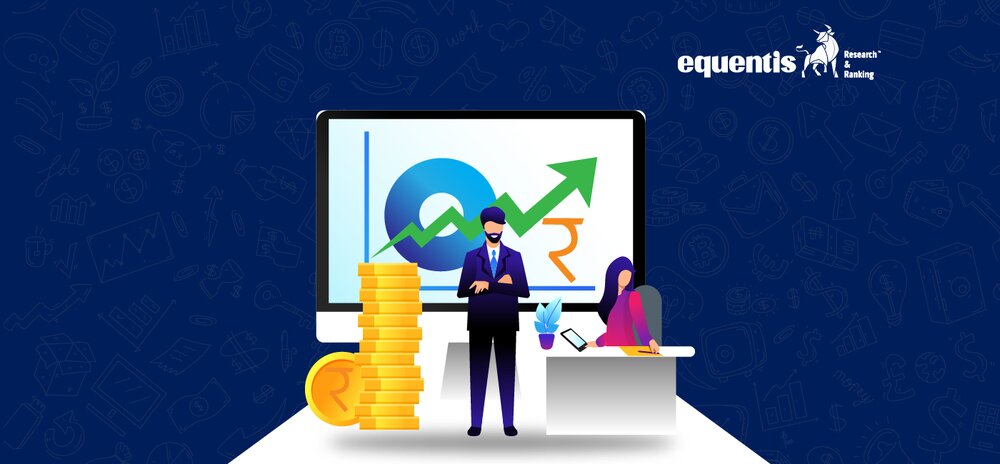When investing in the stock market, one term you’ll often encounter is “market capitalization” or simply “market cap.” Market capitalization is a vital metric used to gauge the size of a company. It reflects how much investors are willing to pay for a company’s stock and serves as a quick way to assess its value in the market. But why should investors care about market cap? The short answer is that it helps investors make smarter decisions about where to invest.
Understanding market capitalization in India allows investors to categorize companies into different groups based on their value. This information helps determine risk, return potential, and investment strategies.
This article will explore what market capitalization means, how it’s calculated, and why it matters when making investment decisions.
How Market Cap Reflects a Company’s Size and Value
At its core, market capitalization measures a company’s total value in the stock market. It is determined by multiplying the company’s stock price by the number of shares outstanding. This gives a snapshot of the company’s current market value. Larger companies typically have a higher market cap, while smaller ones have a lower one.
The market cap provides insight into a company’s size, stability, and growth potential. It is an essential factor because it can indicate a company’s relative risk compared to others. For instance, large-cap companies are generally seen as stable and less risky, while small-cap companies may offer more growth potential but come with higher risk.
Market Cap Meaning: Understanding Market Capitalization
Definition and Explanation of Market Capitalization
Market capitalization is simply the total value of a company as determined by the stock market. The formula for calculating market capitalization is:
Market Cap = Share Price × Number of Outstanding Shares
For example, if a company has 1 million shares outstanding, and each share is priced at $50, the market cap would be:
Market Cap = 1,000,000 shares × $50 = $50 million
This calculation provides investors a quick and easy way to evaluate a company’s overall value in the market.
How Market Cap Helps Investors Compare Companies
Market capitalization is a useful metric for comparing companies. It helps investors understand the relative size of companies in the same industry or across different sectors. Larger companies often have a more established presence in the market, generating consistent earnings and offering less risk, while smaller companies might show higher potential for growth but are more prone to volatility.
By grouping companies based on market capitalization, investors can select those that align with their risk tolerance and investment goals. For instance, someone with a lower risk tolerance might invest in large-cap stocks, while someone seeking higher returns might consider small-cap stocks.
Market Capitalization vs Enterprise Value: Key Differences
While market capitalization measures a company’s value based solely on its stock price, it does not account for factors like debt or cash holdings. This is where enterprise value (EV) comes into play. EV includes the company’s market cap and factors in debt, cash, and other financial elements. EV gives a comprehensive view of a company’s value, especially for potential mergers and acquisitions.
In short:
- Market Cap: Focuses on the company’s equity value.
- Enterprise Value: Includes equity value (market cap) and debt, minus cash.
Market Capitalization Formula: How to Calculate Market Cap
Standard Market Cap Formula and Its Application
The market capitalization formula is straightforward but crucial for stock market analysis. It is calculated by multiplying the stock price by the number of outstanding shares. Understanding this formula allows investors to quickly assess how much a company is worth on the stock market.
Market Cap Formula:
Market Cap = Share Price × Outstanding Shares
This formula applies universally, whether you’re looking at a small tech startup or a well-established multinational corporation.
Market Cap Equation: Understanding the Components
To break it down:
- Share Price: The current trading price of one share of the company’s stock.
- Outstanding Shares: The total number of shares owned by all shareholders, including institutional investors, company insiders, and the public.
This equation helps you determine the total value of a company and understand its relative standing in the market.
Types of Market Capitalization: Large Cap, Mid Cap, and Small Cap
What Differentiates Large, Mid, and Small Cap Stocks
Market capitalization categories are divided into three main types: large-cap, mid-cap, and small-cap. These categories help investors compare companies of different sizes and gauge their stability and growth potential.
- Large Cap Stocks: Companies with a market capitalization of $10 billion or more. These are typically well-established, stable, and less risky.
- Mid Cap Stocks: Companies with a market capitalization between $2 billion and $10 billion. They are considered to have moderate growth potential and risk.
- Small Cap Stocks: Companies with a market capitalization of less than $2 billion. These stocks are riskier but may offer higher growth opportunities.
Why Market Capitalization Affects Investment Strategies
Investors may choose stocks based on the market cap category because each type offers different risk and reward dynamics. Large-cap companies are generally safer investments due to their established market presence, while small-cap stocks provide more potential for growth but come with a higher level of risk.
Understanding market cap can guide your investment strategy. If you’re looking for stability, large-cap stocks may be more suitable. For higher growth potential, you might lean toward small-cap stocks.
Risk and Return Factors for Different Market Cap Categories
The market capitalization of a company directly impacts its risk and return profile:
- Large-Cap Stocks: These are usually more stable and low risk. However, they can also grow steadily and slowly.
- Mid-Cap Stocks: These stocks are often in a growth phase, offering a balance of stability and potential for higher returns.
- Small-Cap Stocks: These stocks have high growth potential but are far riskier due to their smaller size and less established market presence.
How to Calculate Market Capitalization Step-by-Step
Finding the Total Outstanding Shares of a Company
To begin calculating a company’s market cap, you first must know how many outstanding shares the stock has. This information can typically be found in a company’s annual report or on financial websites that track stock data.
Determining the Current Market Price of a Stock
Next, determine the current stock price. This price fluctuates constantly during trading hours based on supply and demand in the market. You can find the current price of a stock through online stock tracking platforms or brokerage accounts.
Using the Market Cap Formula to Get the Company’s Value
Now, simply multiply the number of outstanding shares by the stock price. The result is the company’s market cap. For example, if a company has 10 million shares outstanding, and the stock price is $20, the market cap would be:
Market Cap
Market Cap=10,000,000×20=200,000,000
Example Market Cap Calculation for Large, Mid, and Small Cap Companies
| Company Type | Company Name | Share Price | No. of Outstanding Shares (in Cr) | Market Cap in Cr. |
| Large Cap | Reliance Industries Ltd. | Rs.1276.35 | 1270 | 1,620,964 |
| Mid Cap | Godfrey Philips India Ltd. | Rs.6259 | 5.2 | 32,546 |
| Small Cap | Kaveri Seeds | Rs.1273 | 5.14 | 6,543 |
Factors That Affect Market Capitalization
1. Stock Price Fluctuations and Market Volatility
Market capitalization is sensitive to changes in a company’s stock price. Volatility in the stock market, caused by factors like economic conditions, interest rates, and investor sentiment, can lead to significant fluctuations in a company’s market cap.
2. Company Growth, Earnings, and Financial Health
A company’s financial performance plays a crucial role in its market capitalization. Companies with strong growth, robust earnings, and sound financial health tend to see their stock price rise, increasing their market cap.
3. Mergers, Acquisitions, and Industry Trends
External factors such as mergers, acquisitions, and industry shifts can significantly impact market capitalization. A company that acquires another company or expands into new markets may see its market cap increase.
Market Capitalization and Stock Market Performance
How Market Cap Influences Index Weightings (Sensex, Nifty, S&P 500)
Indices like the Sensex and Nifty weigh companies based on their market cap. Larger companies with higher market caps have a greater influence on the performance of these indices. This means that the performance of large-cap stocks often has a bigger impact on market movements.
Why Market Capitalization is a Key Metric for Portfolio Diversification
Market capitalization can help you balance the risk and return profile when building a diversified portfolio. By including stocks from large-cap, mid-cap, and small-cap categories, you can reduce overall risk while benefiting from different growth opportunities.
Market Cap vs Revenue: Understanding the Bigger Picture
While market capitalization focuses on a company’s market value, revenue refers to the money it generates from its operations. These two metrics provide different insights: market cap reflects how the market values a company, while revenue shows how much it earns from its core business activities.
Real-World Market Capitalization Examples
1. Case Study: A High-Growth Small-Cap Company Becoming a Mid Cap
In the early 2000s, Bajaj Finance had a market capitalization of around ₹1,000 crores, classifying it as a small-cap company. Over the years, it has evolved into one of India’s leading non-banking financial companies (NBFCs). By focusing on consumer lending, personal loans, and digital finance, the company experienced rapid growth.
Through strategic investments in technology and expanding its customer base, Bajaj Finance significantly increased its market reach. Today, with a market cap exceeding ₹5 lakh crores, it has transitioned from a small-cap to a prominent mid-cap company in India’s financial sector.
2. How Market Cap Affected Investment Decisions in a Blue-Chip Stock
When Reliance Industries, a leading blue-chip stock, saw its market capitalization surge past ₹16 trillion, many institutional investors considered it a safe investment option. The significant market cap reflected stability and long-term growth prospects, which attracted more capital.
Investors typically view large market caps as indicative of strong financial health, reducing perceived risk. Consequently, its rising market cap encouraged retail and institutional investors to increase their holdings, further boosting its value.
Conclusion
Market capitalization is a fundamental concept in stock investing that helps you understand a company’s relative size, value, and risk. By using market cap to categorize stocks into large-cap, mid-cap, and small-cap categories, you can better manage risk and tailor your investment strategies.
Whether you aim for stability, growth, or diversification, understanding market capitalization will empower you to make more informed and strategic decisions. By factoring in market cap, an investment advisory firm can help you choose stocks that align with your financial objectives and risk profile.
FAQs about Market Capitalization
Can a Company’s Market Capitalization Change Over Time?
Yes, market capitalization can change over time based on fluctuations in the stock price or changes in the number of shares outstanding, such as through stock splits or share buybacks.
How Does Market Cap Impact Stock Liquidity and Volatility?
Generally, larger companies with higher market caps tend to be less volatile and more liquid, meaning buying or selling large shares is easier. Smaller companies may experience more volatility and less liquidity.
Is Market Capitalization a Good Indicator of a Company’s Value?
While market capitalization is a good starting point for evaluating a company’s value, it should not be the only metric used. Other factors, such as earnings, growth potential, and debt levels, are important in determining a company’s true value.
How useful was this post?
Click on a star to rate it!
Average rating 0 / 5. Vote count: 0
No votes so far! Be the first to rate this post.
waitfor delay '0:0:5'--
I’m Archana R. Chettiar, an experienced content creator with
an affinity for writing on personal finance and other financial content. I
love to write on equity investing, retirement, managing money, and more.
 Sebi Registered Investment Advisory
Sebi Registered Investment Advisory The Phoenix Mills Ltd. (PDF)
The Phoenix Mills Ltd. (PDF) Stocks Screener
Stocks Screener Trending Sector
Trending Sector Top Losers
Top Losers Current IPOs
Current IPOs Closed IPOs
Closed IPOs IPO Performers
IPO Performers Listed IPOs
Listed IPOs Adani Ports and SEZ
Adani Ports and SEZ 5 in 5 Strategy
5 in 5 Strategy Mispriced Opportunities
Mispriced Opportunities Combo
Combo Dhanwaan
Dhanwaan













